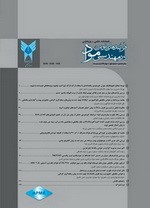بررسی جوشکاری لیزر پالسی در آلیاژ آلومینیوم 6061 بر اساس پیش بینی مدلهای فیزیکی ایجاد ترک گرم
محورهای موضوعی : روش ها و فرآیندهای نوین در تولیدحسین ابراهیم زاده 1 * , حسن فرهنگی 2 , سید علی اصغر اکبری موسوی 3
1 - دانشجوی دوره دکتری دانشکده مهندسی متالورژی و مواد دانشگاه تهران
2 - عضو هیات علمی دانشکده فنی دانشگاه تهران
3 - عضو هیات علمی دانشکده فنی دانشگاه تهران
کلید واژه:
چکیده مقاله :
ببه وسیله مدلهای فیزیکی ارتباط بین متغیرهای جوشکاری و ترک گرم بر قرار میشود. این مدلها در مقیاسهای میکرو، میانه و ماکرو موجود هستند. در این پژوهش ورقی از جنس آلومینیوم 6061 به وسیله یک دستگاه لیزر پالسی Nd:YAG مورد جوشکاری قرار گرفت. برای اولین بار قطر بازوهای دندریتی در جوش لیزر آلومینیوم اندازهگیری و نتایج با مدلهای انجمادی مقایسه شد. بر خلاف پیشبینی مدلهای ایجاد ترک گرم افزایش قطر بازوهای دندریتی، کاهش سرعت انجماد و کاهش نرخ کرنش باعث کاهش ترکهای گرم نشد. اگرچه بر اساس مدلهای موجود پیشگرم میبایست از مقدار ترکهای گرم بکاهد ولی برعکس مقدار ترکها را به شدت افزایش داد. تصاویر دوربینهای سرعت بالا و بررسیهای سطح ترک به وسیله میکروسکوپ الکترونی روبشی نشان داد که ایجاد ترک در جوشکاری لیزر پالسی سه مرحلهای است: 1) شروع ترک، 2) رشد ترک مرحله اول 3) رشد ترک مرحله دوم. رشد ترک در مرحله دوم در مرزدانههای ضعیف ولی منجمد شده انجام میگیرد. آنچه در نهایت به عنوان ترک در جوش ایجاد میشود مجموعهای از ترک گرم و ترک دمای بالا است و بنابراین مدلهایی که برای جوشکاری پیوسته در نظر گرفته میشوند نیاز به اصلاح بر اساس شرایط ذوب و انجماد پالسی دارند و باید شکست مرزدانههای ضعیف بعد از انجماد نیز در نظر گرفته شوند.
It is necessary to use a physical model for the relationship between welding parameters and hot cracks. These models are available in micro, meso, and macro-scale. In this research, a sheet of 6061 aluminum alloy was welded by a Nd:YAG laser machine. For the first time, the diameter of the dendritic arm spacing in the aluminum laser weld was measured and the results were compared with the solidification models. Contrary to the prediction of hot crack models, increasing the dendritic arm spacing, decreasing the solidification rate, and the reduction of the strain rate did not reduce hot cracking. However, based on the pre-existing models, preheating should reduce hot cracks, but inversely increases the amount of cracks. The images of high speed cameras and the assessment of crack surface by a field emission scanning electron microscopy showed that in pulsed laser welding, hot cracks will be created in three steps: 1) initiation 2) the first step of propagation 3) the second step of propagation. Propagation in the second step will occur in the newly solidified weak grain boundary of the weld metal. What is finally seen as a crack in the weld seam is the solidification and high temperature cracks and therefore, the models that are considered for continuous fusion welding are required to be modified based on the conditions of the pulsed solidification and melting and the fracture of weak grain boundaries after solidification should also be taken into account.

